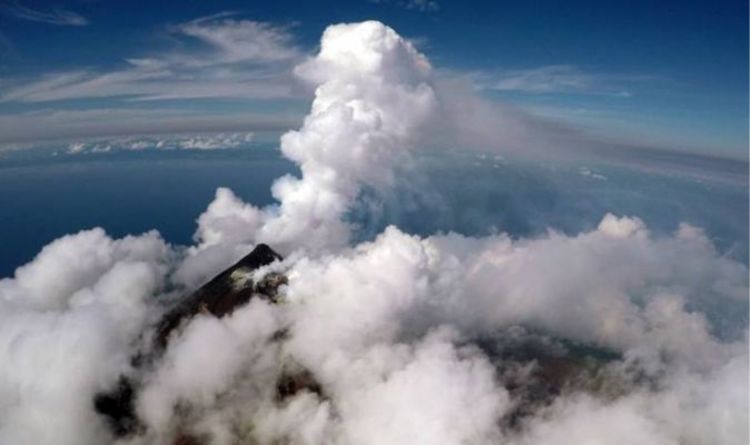An international team of researchers traveled to Manam volcano in Papua New Guinea to better understand the warning signs of volcanic eruptions. The volcano is located on an island that is only six miles wide and is home to 9,000 people.
Nevertheless, it is a relatively active volcano, as evidenced by the 2004 eruption that forced the entire population to evacuate.
As such, the scientists chose it as the ideal volcano to observe their new system.
The team, which included specialists from the United Kingdom, the United States of America, Canada, Italy, Sweden, Germany, Costa Rica, New Zealand and Papua New Guinea in a group known as ABOVE, integrated the old surveillance systems with the new technologies.
There are already methods for measuring potential volcanic eruptions – such as monitoring earthquake activity or satellite information that can measure volcanic emissions of gases such as sulfur dioxide (SO2).
Now, the team has prepared drones to add miniature gas sensors, spectrometers, and samplers that can bomb the crater.
As a result, scientists can get a clearer view of what is happening inside the volcano and provide a better warning in light of a possible eruption.
The team can collect gas samples and calculate the ratio between levels of sulfur and carbon dioxide in the volcano’s emissions.
By determining the ratio, scientists will be able to determine exactly where the magma is, which will be a telltale sign of whether it is rising or not.
Read more: Yellowstone scientists discover a “dome lift” of the caldera
While volcanoes do not contribute as much carbon to the atmosphere as humans, they are still a big contributor.
By understanding the factors that control carbon emissions from the volcano, the team stated that they would be able to understand how the Earth would interact with carbon-induced climate change.
Co-author Professor Alessandro Ayuba (University of Palermo) said: “Ten years ago you could only peek and guess what the CO2 emissions were in Manam.
“If we take into account all the carbon emitted from global volcanic activity, it is less than a percentage of the total emissions budget, which is dominated by human activity.
“In a few centuries, humans are behaving like thousands of volcanoes. If we keep pumping carbon into the atmosphere, it will make monitoring and predicting volcanic eruptions using atmospheric gas observations more difficult.”
Professor Tobias Fischer, co-author from the University of New Mexico, added: “To understand the drivers of climate change, you need to understand the Earth’s carbon cycle.
“We wanted to quantify the carbon emission from this huge carbon dioxide emission gas.
“We had very little data regarding the isotope formation of carbon, which would determine the source of the carbon and whether it was the mantle, crust or sediments. We wanted to know where this carbon came from.”

Subtly charming zombie buff. Amateur analyst. Proud tvaholic. Beer fanatic. Web expert. Evil troublemaker. Passionate internet maven. Gamer. Food evangelist.

